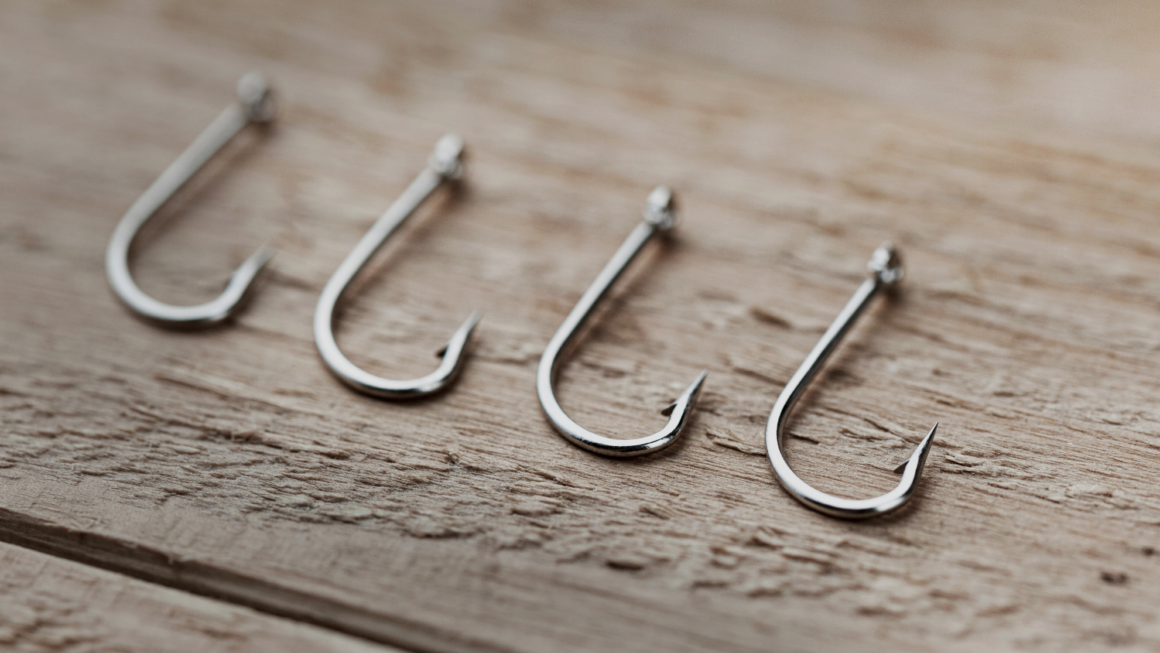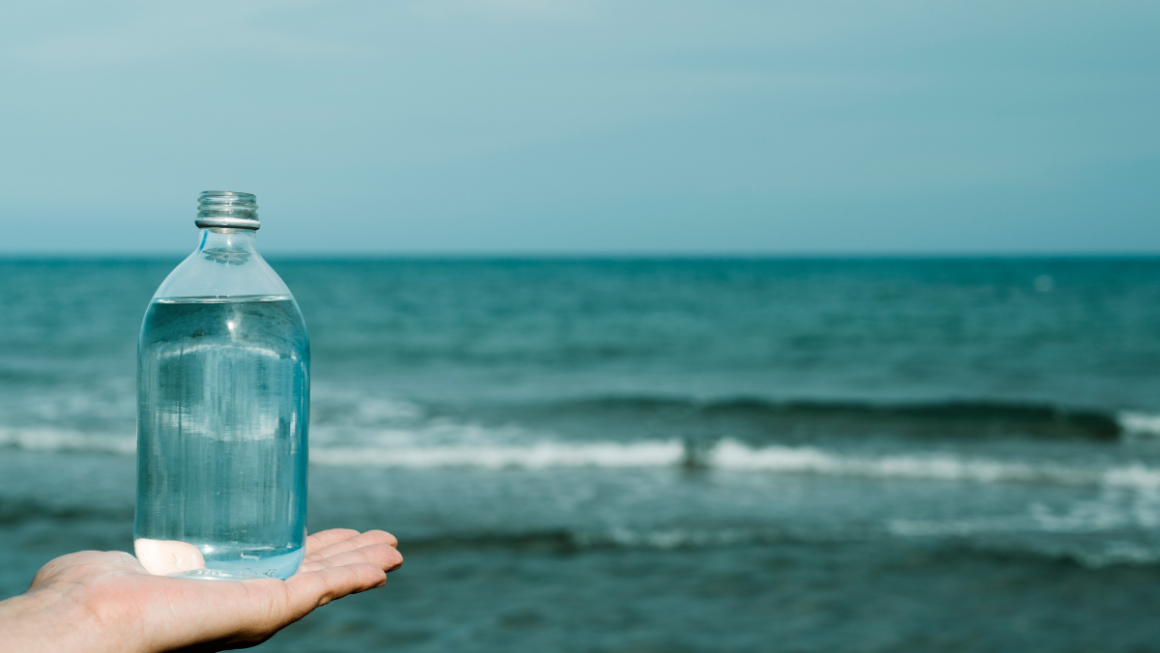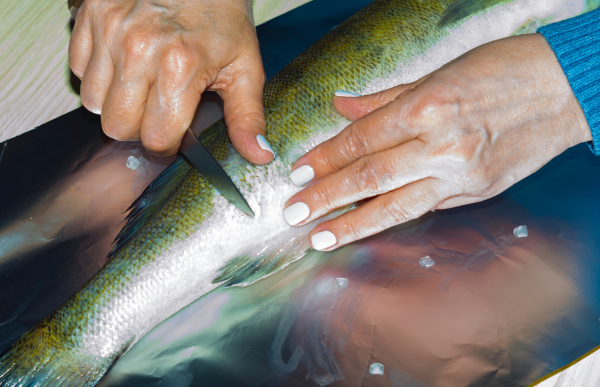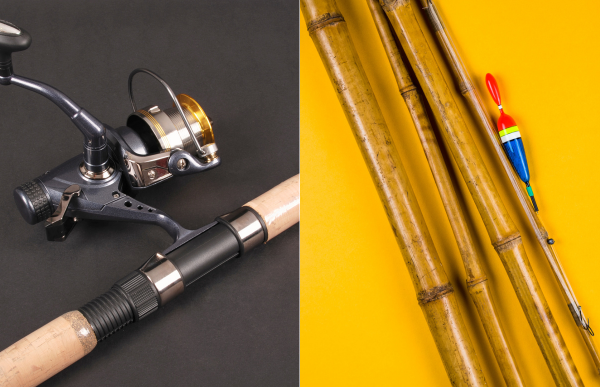Fishing, a skillful blend of patience, technique, and the right equipment, hinges on selecting the perfect hook for each fishing style and targeted fish species. Each hook type is uniquely designed to enhance specific fishing techniques, maximizing the chances of a successful catch. This guide explores some of the best hooks for different fishing methods and the fish they’re designed to attract.
1. Treble Hooks for Lure Fishing
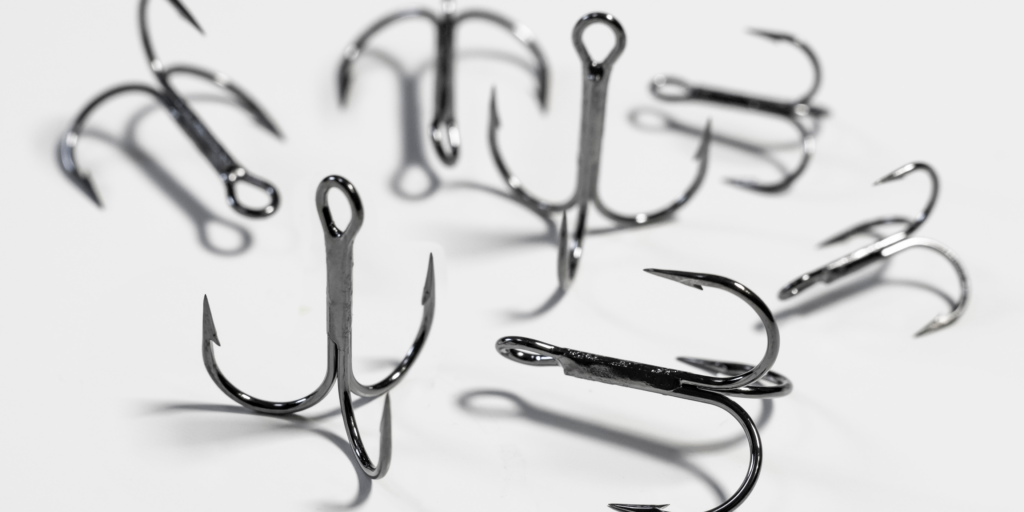
Treble hooks are a popular choice for anglers who use artificial lures, as their design consists of three hook points on a single shank. This increases the chances of hooking a fish during strikes, as there are multiple points of contact compared to single hooks. Treble hooks are commonly paired with hard-bodied lures like crankbaits, jerkbaits, and spoons, adding to the lure’s appeal by providing better hooking potential and enhancing the action in the water.
Key Features of Treble Hooks:
- Three Prongs: Treble hooks have three hook points that maximize the likelihood of hooking a fish, especially those with quick strikes.
- Lure Compatibility: Often found on artificial lures, treble hooks complement lures by balancing them in the water and enhancing their movement.
- Short Shank: Treble hooks generally have a shorter shank than single hooks, allowing them to stay close to the body of the lure and maintain balance, reducing the risk of snagging on underwater debris.
Ideal Fish Types:
- Pike: Known for their aggressive attacks, pike often respond well to crankbaits and spoons outfitted with treble hooks. The multiple hook points help secure this strong, thrashing predator.
- Bass: Largemouth and smallmouth bass are often targeted with hard lures like crankbaits that use treble hooks. The extra prongs increase the hook-up ratio, especially with bass that may try to shake the hook.
- Saltwater Fish (Mackerel, Bluefish): Many saltwater species, including mackerel and bluefish, have strong jaws and are known to thrash upon being hooked. Treble hooks ensure they’re more securely hooked, even with aggressive strikes.
Technique Tip:
- Use in Open Water or Sparse Cover: Treble hooks are most effective in open water or areas with minimal underwater vegetation or structures, as the three-prong design can easily snag on rocks, weeds, or logs. Open water allows for smooth retrieval and minimizes the chances of losing the lure.
- Enhance Lure Movement: Treble hooks can add weight to a lure, subtly changing its movement. This is especially useful with crankbaits, where a balanced hook allows the lure to wobble or dive naturally, making it more enticing to fish.
- Avoid Jerking Too Hard on the Set: With treble hooks, there’s no need to aggressively set the hook. When a fish strikes, the three hook points typically secure it quickly, especially if the lure is already moving. A light pull or simply reeling in smoothly is often enough to ensure a solid hook-up.
- Choose the Right Size Treble Hook for the Lure: Lure effectiveness depends on balance, and the size of the treble hook can impact this. Larger hooks can weigh down smaller lures, reducing their natural action, so it’s essential to match hook size with lure size for optimal performance.
- Control Lure Retrieval Speed: Treble hooks are ideal for fast-moving lures, as the rapid motion makes them more difficult for fish to resist and often results in solid hook-ups. Adjust retrieval speed based on the lure type and fish behavior, speeding up in warmer waters or slowing down in cooler seasons.
- Check Hook Sharpness Regularly: Treble hooks tend to dull after multiple uses, especially in rocky areas. Sharpening the hooks occasionally ensures better penetration, especially with fish that have strong jaws or tough skin.
Why Treble Hooks Are Effective with Artificial Lures:
Treble hooks are perfect for artificial lure applications because they complement the lure’s design and movement, increasing the chances of securing fish that strike quickly. With their three prongs, treble hooks offer better hook-up ratios, particularly valuable for anglers fishing in open water where fish are more likely to go after hard lures. Whether fishing for pike in freshwater or mackerel in saltwater, treble hooks enhance lure performance, making them a go-to choice for anglers aiming to land hard-striking, aggressive fish.
Overall, treble hooks are an excellent option for catch-focused anglers, maximizing the chance of a secure hook-up while balancing the lure’s action and appeal.
2. Octopus Hooks for Drift Fishing and Soft Bait

Octopus hooks are a versatile choice among anglers due to their unique design, which includes a short, curved shank and an offset eye. The curved shank and offset eye allow the hook to sit at an angle, providing a more lifelike bait presentation, especially useful when using live or cut bait. The offset design makes it easier for the hook to penetrate once a fish bites, while the shorter shank allows for a natural appearance that can be highly effective in fooling wary fish.
Key Features of Octopus Hooks:
- Short, Curved Shank: The short shank keeps the hook close to the bait, reducing visibility and allowing for a more natural look in the water.
- Offset Eye: The offset eye creates an angle in the hook that improves hook-setting efficiency. This feature is particularly useful in drifting, as the hook tends to rotate toward the corner of the fish’s mouth, minimizing deep hooking.
- Wide Gape: Octopus hooks typically have a wider gape, which provides a greater chance of hooking the fish without compromising bait presentation.
This hook design is popular in both freshwater and saltwater fishing, and it’s particularly effective in techniques that involve moving or flowing water, such as drifting.
Ideal Fish Types:
- Salmon: Salmon are known to take bait while on the move, and octopus hooks help present bait naturally, making them effective for salmon fishing.
- Trout: Trout are often wary and easily spooked, especially in clear water. The natural presentation offered by octopus hooks helps attract these cautious fish.
- Walleye: With sensitive bites and a preference for live or soft bait, walleye are often caught using drifting techniques. Octopus hooks help present the bait at an appealing angle, increasing the chances of a hook-up.
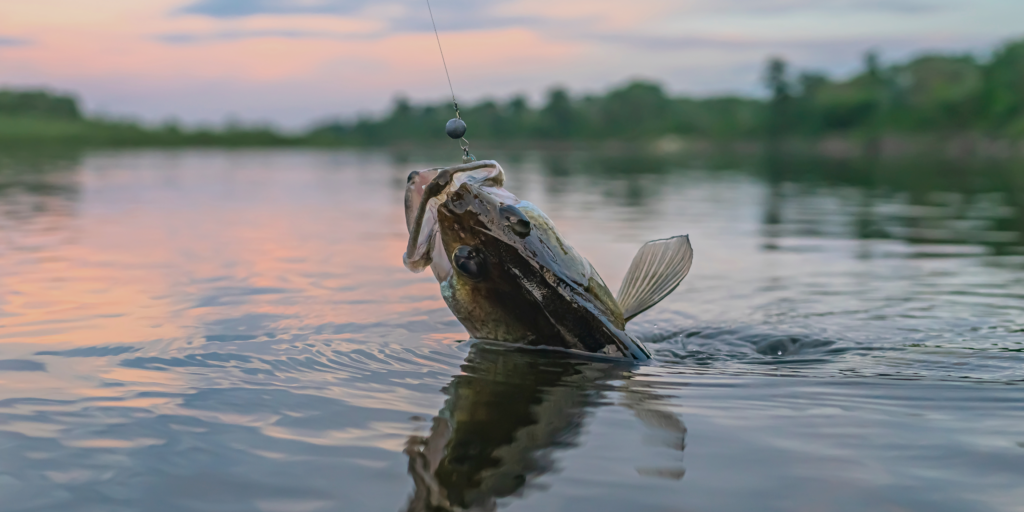
Technique Tip:
- Attach Soft Bait Naturally: When using soft bait, such as worms, minnows, or cut bait, thread it onto the hook in a way that maintains its natural appearance. For example, if using a worm, hook it once through the body, allowing it to dangle naturally. This creates a realistic look that entices fish in moving water.
- Use in Moving Water or Drifting Scenarios: Octopus hooks shine in drifting techniques, where the bait is naturally carried by the current. Cast upstream or into moving water and let the bait drift downstream, mimicking natural prey movement.
- Keep Tension on the Line: When drifting, keep slight tension on the line to stay connected with the bait and detect subtle bites. The offset eye of the octopus hook helps the hook rotate toward the fish’s mouth, increasing the chances of a secure hook-up when tension is applied.
- Match Hook Size to Bait and Fish Size: Select a hook size that complements the bait without overpowering it. Smaller octopus hooks (sizes 8 to 4) work well with delicate baits for trout, while larger sizes (1/0 to 3/0) are suitable for bigger bait and larger species like salmon.
- Experiment with Snelling for Better Hook Sets: Using a snell knot with octopus hooks can align the hook at an even better angle for hook sets. This technique keeps the hook’s angle optimal when tension is applied, making it ideal for drifting and bottom fishing in current.
- Minimal Rod Movement: Avoid excessive rod movement when fishing with octopus hooks in drifting scenarios. Instead, let the current carry the bait naturally. Fish are more likely to bite when the bait drifts at the pace of the water, as it mimics prey behavior.
3. J Hooks for Bottom Fishing and Deep-Sea Fishing
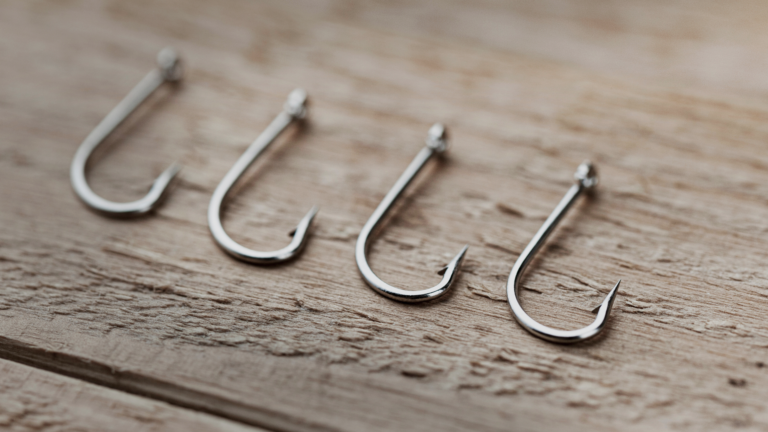
J hooks are named for their simple, classic “J” shape and are highly popular among anglers who target larger fish, especially in bottom fishing or deep-sea environments. Known for their versatility, J hooks can be used for both active and passive fishing. The shape allows anglers to engage in various fishing methods, from letting the bait sit for passive fishing to actively setting the hook with a sharp pull. This versatility, combined with the strength and durability of J hooks, makes them an essential choice for those targeting large and hard-fighting species in deeper waters.
Key Features of J Hooks:
- Traditional “J” Shape: The hook shape allows for easy hook setting, especially when a fish bites aggressively. This shape is particularly effective for anglers who prefer to set the hook actively.
- Versatile Hooking Techniques: Unlike circle hooks, which are primarily self-setting, J hooks allow the angler to set the hook manually, making them suitable for both passive and active fishing styles.
- Strong Hook Design: Made to withstand the force of large fish, J hooks are typically crafted from durable materials and can handle the pressure of deep-sea fishing.
J hooks are especially effective for targeting large species in environments where fish tend to bite more aggressively, such as near reefs or rocky bottoms in deeper waters.
Ideal Fish Types:
- Grouper: Often found near reefs and rocky bottoms, grouper are powerful fighters, and J hooks offer the strength needed to secure and land these fish.
- Snapper: These reef-dwelling fish respond well to both live and cut bait presented on J hooks. Snapper are known for their aggressive strikes, making J hooks a suitable choice.
- Large Saltwater Species (e.g., Amberjack, Halibut): In deeper waters, species like amberjack and halibut require strong hooks that can hold up during prolonged fights. J hooks work well for these larger saltwater fish, especially when paired with a strong line and weight setup.
Technique Tip:
- Use Sturdy Lines and Heavy Weights: In deep waters or strong currents, use a durable line, such as braided or heavy monofilament, paired with heavy weights. This setup ensures that the bait reaches the bottom quickly and stays within the target zone.
- Employ a Bottom Fishing Rig: Use a rig such as a Carolina rig or a fish-finder rig, which positions the bait near the bottom. This setup is ideal for J hooks, as it keeps the bait within reach of bottom-feeding species like grouper and snapper.
- Set the Hook Actively When a Fish Bites: Unlike circle hooks, which often don’t require active setting, J hooks perform best when the angler sets the hook with a sharp, controlled pull. This is especially effective for larger species that may bite aggressively and require a firm hook set.
- Choose Larger Hook Sizes for Bigger Fish: Match the hook size to the bait and the target fish. For large bottom dwellers like grouper, use J hooks sized 5/0 or larger, while slightly smaller hooks (2/0 to 4/0) work well for species like snapper.
- Keep the Hook and Bait Positioned Close to Structure: Large bottom-feeding fish often stay near reefs, rocks, or drop-offs. Position the bait as close to these structures as possible to attract fish, and use a weight to keep it stable in areas with strong currents.
- Consider Bait Type: J hooks pair well with live or cut bait. Hook live bait through the nose or back to keep it moving naturally, while chunks of cut bait can be hooked securely to stay in place on the bottom.
Selecting the right hook is crucial to a successful fishing experience. Each type, from bait hooks to J hooks, is crafted to match specific techniques and fish species, ensuring not only effective catches but also the sustainability of fish populations. Whether you’re an avid angler or a weekend fisherman, understanding these hook types enhances your connection to the art of fishing and the waters you explore.

